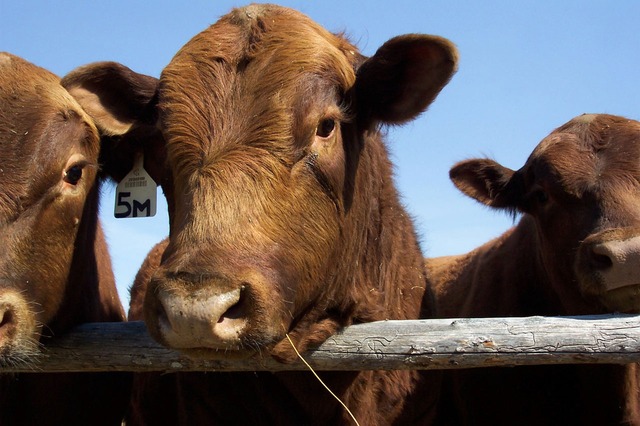Livestock’s Bleak, Industrial Future
Posted on November 16, 2016

The more the American meat and milk sectors industrialize—via integrated contract production, fewer bigger players, machine-centered scale—the more these key parts of American agriculture resemble industry itself: commoditized products, razor-thin margins, and extended periods of steep losses.
This shift from what we once quaintly called animal husbandry has also shifted economic and political power to a handful of farm groups and even fewer transnational gatekeepers. These global players now dominate—and discipline—the farm-to-food marketing process.
That’s the point; discipline the input- and output-side of the fabrication process to squeeze more profit from both sides of the gate.
And, wow, is it working. Currently, Big Food is reaping enormous profits while almost every dairy farmer, hog farmer, and cowboy is begging gatekeeping packers and processors for pennies to soften a bruising year.
Worse, today’s crushing livestock markets are going to get far bleaker before any gets remotely better.
For example, in his Sept. 30 “Weekly Livestock Comments,” Andrew Griffith, an ag economist at the University of Tennessee, noted beef calves that sold for $180 per hundredweight (cwt.) this past March “averaged $118… this week… a 34.5 percent decline… or a value reduction of $341 per head.”
Moreover, Griffith offered, when recently asked “what year” (Year?) today’s rib-busting cattle market would bottom, he replied, “There’s no doubt that 2017 prices will be lower than 2016 prices… It is likely 2018 prices will result in another decline… and… large losses. Prices will likely be below 2016 levels in 2019…”
Holy cow, if today’s devastatingly low-and-going-lower cattle prices continue for two and, possibly, three more years, will any independent cowboys even be around in 2020?
Misery loves company and the cowboys won’t be riding into the sunset alone. The bloodbath in today’s hog market will be equally long and equally “punishing,” predicted Purdue University ag economist Chris Hurt in his Oct. 3 “Weekly Outlook” report.
“With hog prices in the higher $30s this fall and winter,” explained Hurt, “estimated losses will be $25 to $30 per head. Losses are expected to moderate in the spring and summer of 2017 and intensify once more in the fall of 2017. For the year 2016, estimated losses are about $10 per head and for 2017, projected losses are at $16 per head.”
That means expected losses this year and next will near $3.5 billion and could climb if forecasted production tops recent government estimates, as many market watchers now suggest.
Dairy farmers, on the other hand, will likely continue on the roller coaster ride that’s sickened them for two years. Like the packer-integrated hog sector that continues to expand into today’s market meltdown, mega-cow dairies continue to add cows despite clear market signals to stand pat or even cull.
That herd expansion has led to over-production and, in turn, parachuting prices for the bellwether Class III milk, or milk ticketed for cheese making.
While farmers and ranchers have been taking it in the teeth this year, Big Food is chewing through increased profits. Cargill, which operates in every corner of the world’s food business, announced Oct. 3 that its “adjusted operating earnings rose 35 percent to $827 million in the first quarter…” On Aug. 8, Tyson Foods, Inc. noted that its quarterly “earnings surge(d) 51% due to strong performance…”
None of this is news. Big Food has been moving in on American farmers and ranchers for decades. Indeed, many farm and ranch groups encouraged the move as a logical next step in “modern food production” because it promised profit with less risk.
Now, however, it’s delivering dead and near-dead cash markets, waves of cheap imports, sustained low prices, and years of sector-shattering losses. And, too, deafening silence from the farm and ranch groups who pushed these “supply chain” links as the “future.”
When they do speak now, however, it’s usually to blame today’s market collapse on vegans, vegetarians, and the Humane Society of the U.S.
Since they’re wrong on the origin of today’s sickness, no one should expect them to be right about its cure.
© 2016 ag comm
Share This